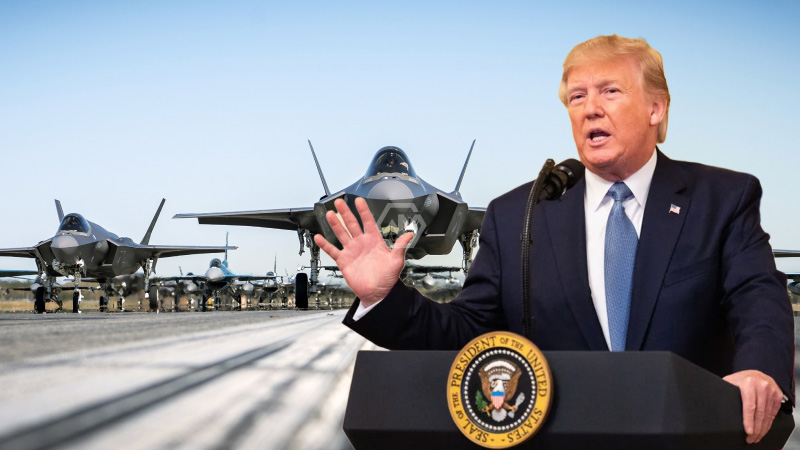- Trump’s proposed $892.6 billion defense budget favors drones, missiles, and tech-driven systems.
- Traditional platforms like the F-35 fighter jets and Navy ships see reduced funding.
- Budget aims to counter China’s military ambitions and strengthen the U.S. defense industrial base.
In a stark reconfiguration of U.S. defense priorities, former President Donald Trump is pushing for an $892.6 billion national security budget that shifts emphasis from traditional military assets to advanced unmanned and precision technologies.
The proposed realignment signals a strategic pivot toward modern warfare, prioritizing missile systems and drone capabilities to enhance U.S. defense posture in the Indo-Pacific region.
Trump’s Military Budget Overhaul Puts Tech First, Reduces Legacy Systems
This move could have ripple effects across America’s defense contractors and military workforce. Companies tied to legacy systems like the F-35 stealth fighter or naval shipbuilding may see contract reductions. However, firms specializing in autonomous systems, AI-based warfare, and long-range precision weapons may benefit from increased investment and development contracts.
By holding the budget flat while reorganizing spending priorities, the Trump proposal reflects a strategic balancing act. It avoids a dramatic rise in military expenditure but redirects current funds toward capabilities viewed as essential for 21st-century threats, including cyberwarfare and space-based operations.
The emphasis on domestic defense production aligns with broader nationalist economic policies, aiming to reduce reliance on foreign parts and labor while creating skilled manufacturing jobs within the U.S. It’s a political and economic message designed to resonate with American workers and defense industry advocates.
Opponents of the plan warn that reducing investment in traditional platforms could leave gaps in U.S. defense readiness. Critics argue that air superiority, naval power, and force projection remain critical to U.S. global influence, particularly as nations like Russia and China invest in both legacy and emerging systems simultaneously.
Trump’s defense proposal reimagines U.S. military strength through a lens of technological modernization, opting for precision and innovation over bulk and tradition.
“In preparing for battle I have always found that plans are useless, but planning is indispensable.” — Dwight D. Eisenhower



